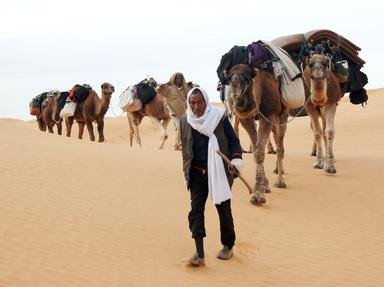Quiz Answer Key and Fun Facts
1. Tunisia is an Arab country in the Maghreb of North Africa. It continually defies stereotyping. Tunis is one of 19 world capitals that have similar names to their country. True or false: Tunis is named after Tunisia.
2. Tunis was originally a Berber settlement but over the centuries the area has been raided many times. Records are few but which group do we know, with certainty, attacked Tunis in 146 BC?
3. In 1869, after passing through many sets of governing hands, Tunisia declared itself bankrupt. Which group took advantage and invaded in 1881?
4. True or False: The similarities between the Flag of Turkey and the Flag of Tunisia are to demonstrate that Tunisia is an Islamic State.
5. Because of the multitude of invasions over the years you would think that Tunisia would be multi-lingual but over 98 % speak the official language which is?
6. Tunisia is a small country by North African standards. With which other countries does it share borders?
7. For such a small country Tunisia has environmental diversity along its north-south dimension. Is it true that along its mere 790 km from north to south, there are four climatic zones?
8. For an African nation, some of its neighbours are European. Which is the closest European nation to Tunisia?
9. While the north-south landscape is fairly flat from coast to desert, there is a chain of mountains in the north west of Tunisia which are more commonly associated with Morocco and Algiers. What is the name of these mountains?
10. Tunisian cuisine is a result of many different cultures residing within its area. While the cuisine is eclectic, there is a staple on which all cuisine is based. What is this staple food?
Source: Author
1nn1
This quiz was reviewed by FunTrivia editor
agony before going online.
Any errors found in FunTrivia content are routinely corrected through our feedback system.
